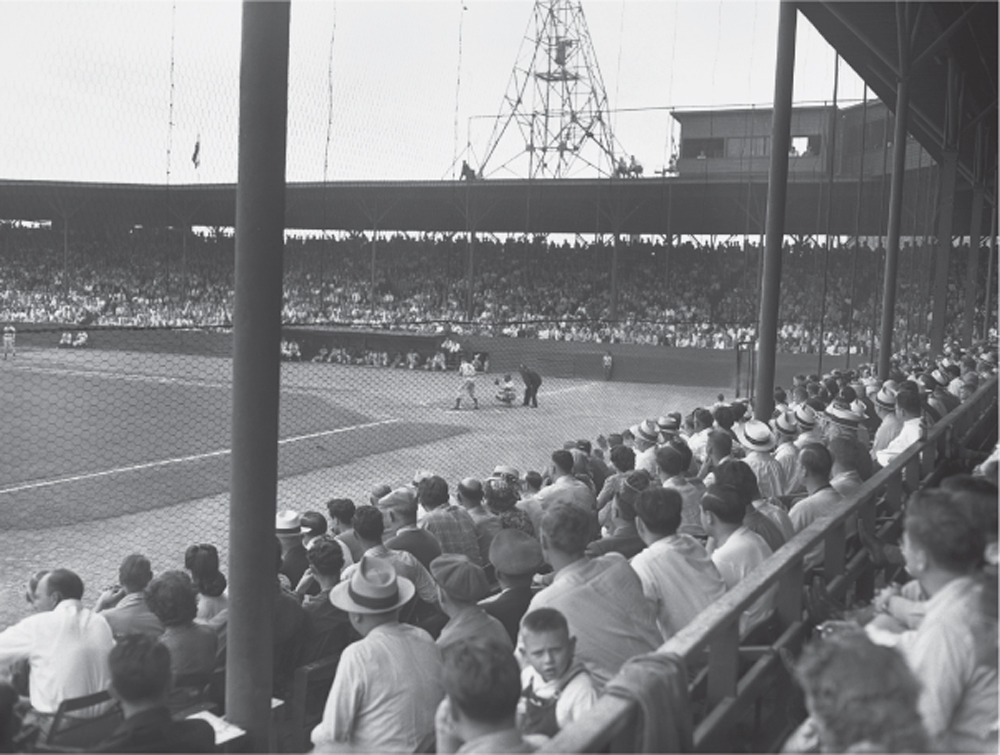INTRODUCTION
Imagine strolling through the woods on a sunny day without a care in the world—looking for nothing, simply open to the possibilities of nature—when suddenly, dangling from a tree branch, a big, brown envelope seems to emerge from the sky. You look at it in amazement—such an unexpected event in so quiet a place—and decide to open it. Inside, you find a treasure trove of vintage family photographs. Nothing can describe how you feel about this serendipitous discovery, but you decide you must share it with the world. Such is how I felt after I came upon the wonderful collection of Minneapolis Millers photographs at the Hennepin County Library, located in downtown Minneapolis, in the summer of 2013.
In this, my second book for Arcadia (I completed a volume on the American Association Milwaukee Brewers in 2004), I have brought many examples from this expansive array to the public eye. Perhaps the most difficult part of the project was the process of selection. In the Milwaukee book, we were dealing with a small, private collection. In this one, the number of photographs could have been double that which made it to the book you now have in your hands. After many hours of making scans, I have attempted to make the selections according to player prominence and artistic quality in order to bring forth the best possible examples. Many of the unpublished photographs will be posted on my American Association website (www.almanacfield.com).
I grew up in a family that more or less supported my incessant need to surround myself with baseball. After my teaching career came to a close some 15 years ago, I dedicated myself to researching and writing about baseball history. Growing up in Madison, Wisconsin, my interests revolved around regional teams, including the old Milwaukee Brewers, and from there my passion in the American Association as a whole slowly grew. I have developed a considerable degree of knowledge with respect to the Association, including the Minneapolis Millers and St. Paul Saints (whose rivalry I describe in a book recently published by McFarland: The Millers and the Saints: Baseball Championships of the Twin Cities Rivals). In describing these select photographs, I have made every effort to present things in a way that will inspire curiosity. Through these pages, the reader is invited to look back upon the past with a sense of wonder toward the game of baseball as it was.
Please observe the dates (in parentheses) following the name of each player in the caption titles; these indicate the years spent as an active player with the Minneapolis Millers.

INSIDE NICOLLET PARK. The photographer of this c. 1945 image sat, accompanied by the murmur of the crowd, in the third-base grandstand, aiming the camera lens in the direction of home plate. Originally built in 1896, Nicollet Park sported an all-wooden grandstand, a parking area beneath the facility, and the shortest right-field line in the league. For many years, it was believed that the distance from home plate to the right-field corner was just over 279 feet. However, in 1949, a reporter for the St. Paul Pioneer Press determined it was actually 258 feet. To center field, the distance was a healthy 435 feet, and down the line in left it was 336 feet. The stands had a capacity of 10,000. The best five-season attendance total, 232,152, came right after World War II between 1945 and 1949. The first American Association game at Nicollet Park was played on Saturday, May 10, 1902, against the Louisville Colonels. The Millers struck first with four runs in the first inning, going on to win 9-4. Manager and right fielder Walter Wilmot had three hits in four at-bats, and Fred Luther was the winning pitcher. (Courtesy the Minnesota Historical Society.)
